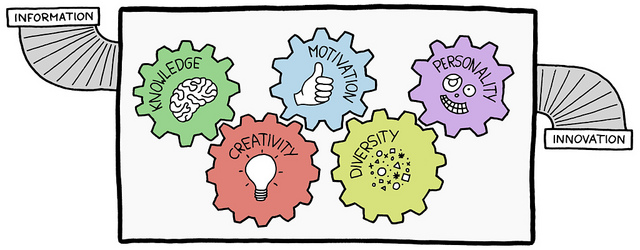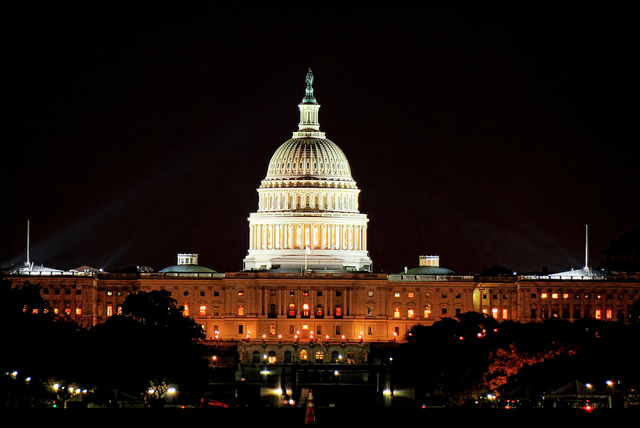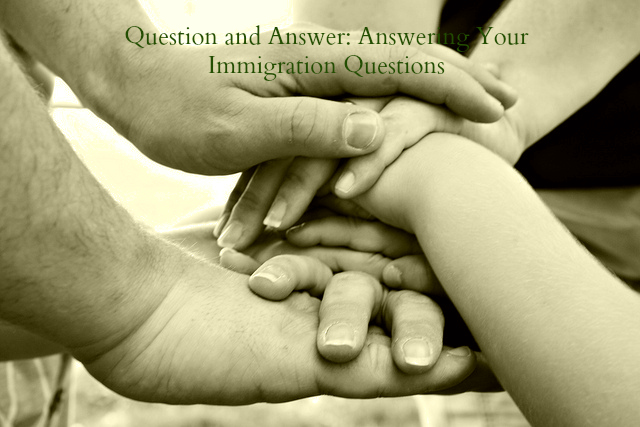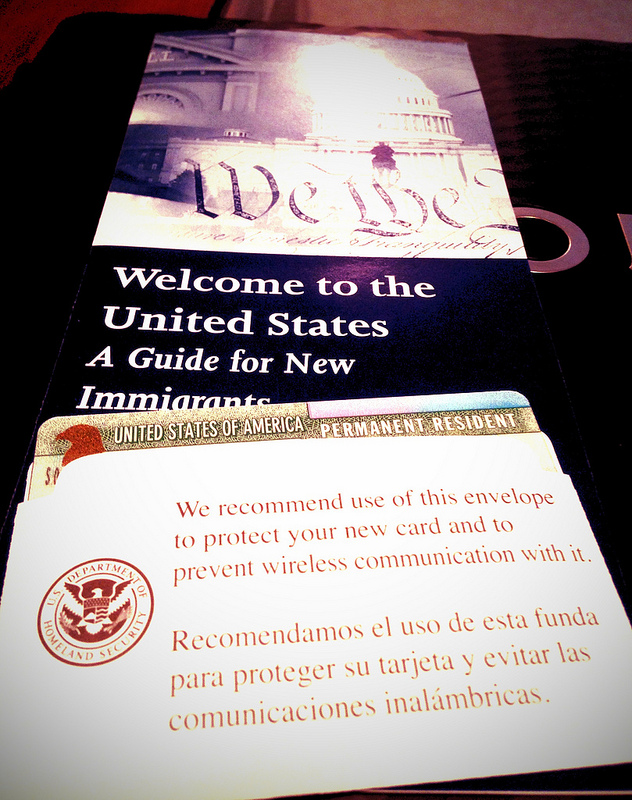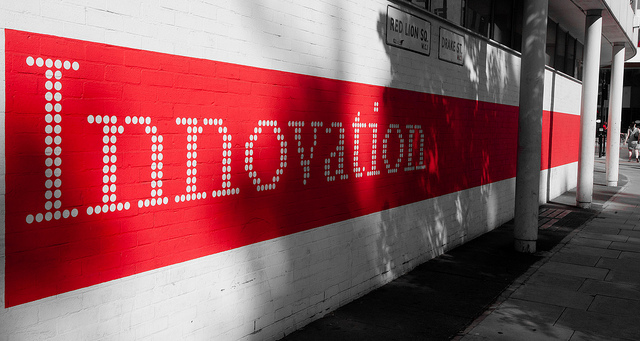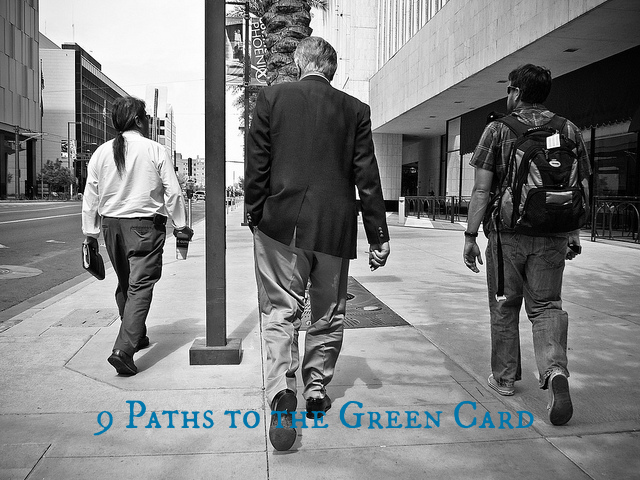UPDATE: Today, December 29, 2016, USCIS announced that previous editions of affected forms will continue to be accepted by USCIS until February 21, 2017, except for the N-400 Application for Naturalization. N-400 Application for Naturalization must be filed with the 12/23/16 edition date. No prior editions of form N-400 will be accepted by USCIS. Please remember that the new fee schedule will continue to be enforced. New form editions will contain an edition date of 12/23/16. Updated forms can be found at uscis.gov/forms. The complete fee schedule can be found at uscis.gov/forms/our-fees.
Articles Posted in Employment-Based Categories
DOS Publishes FY 2017 Annual Numerical Limits for Family and Employment-Based Preference Categories
On December 12, 2016, the Department of State published the Annual Numerical Limits for both family and employment-based visa preference categories for Fiscal Year 2017.
Family preference and employment immigrant categories are subject to numerical limitations and are divided by preference systems on the Visa Bulletin and become current based on the immigrant’s priority date. The Visa Bulletin estimates immigrant visa availability for prospective immigrants. Applicants who fall under family preference or employment categories must wait in line until an immigrant visa becomes available to them, for applicants to proceed with their immigrant visa application. Once the immigrant’s priority date becomes current per the Visa Bulletin, the applicant can proceed with their immigrant visa application. A priority date is generally the date when your relative or employer properly filed the immigrant visa petition on your behalf with USCIS. The Visa Bulletin exists due to numerical immigrant visa limitations for family-sponsored and employment-based preference categories established by the Immigration and Nationality Act (INA). Family-sponsored preference categories are limited to a minimum of 226,000 visas per year, while employment-based preference categories are limited to a minimum of 140,000 visas per year. The Visa Bulletin is a useful tool for aliens to determine when a visa will become available to them so that they may apply for permanent residence.
January and February Visa Bulletin Projections
On November 20, 2016, the Chief of the Visa Control and Reporting Division of the Department of State, Charles Oppenheim, provided his outlook on recent trends and future projections for employment-based immigrant preference categories of the Visa Bulletin.
December Visa Bulletin Predictions
- A final action date has been imposed on the EB-4 preference category for the country of Mexico in the month of December
- The non-minister EB-4 special immigrant category and the I5 and R5 classifications of the immigrant investor pilot program will expire on December 9, 2016.
- EB-1 China and EB-1 India are expected to be subject to a final action date in the near future
- A final action cut-off date will be imposed for EB-2 Worldwide, EB-2 Mexico, and EB-2 Philippines by the month of July.
January and February Projections
Regarding movement of EB-4 El Salvador/Guatemala/Honduras during the next 12 months
Oppenheim has stated that the State Department does not have any knowledge of the volume of cases adjudicated by USCIS for this preference category. Due to this lack of information, the State Department does not know at what rate USCIS will pre-adjudicate these cases once the final action date is in place. The reason the December cut-off date for Mexico was imposed was because there was a large number of EB-4 Mexico petitions processed with 2015 and 2016 priority dates. A retrogression of the EB-4 final action date for these countries is not expected to occur during this fiscal year, despite high demand. There is currently a very high level of demand in this category that is expected to continue. Typically, when a final action cut-off date is imposed, demand increases, because applicants rush to apply quickly before a retrogression is imminent.
Final Rule Benefitting EB-1, EB-2, and EB-2 Immigrant Workers and Certain Highly Skilled Nonimmigrant Workers with an I-140
The Department of Homeland Security is expected to publish a final rule tomorrow November 18, 2016 benefitting EB-1, EB-2, and EB-3 employment-based immigrant workers and highly-skilled nonimmigrant foreign workers. The final rule is effective January 17, 2017. The final rule will streamline the process for employment based sponsorship of nonimmigrant workers for lawsuit permanent resident status (LPRs), increasing job portability, and promoting stability, flexibility, and transparency in the way DHS applies its policies and regulatory practices to these programs. These changes were proposed in order to better equip U.S. employers to employ and retain highly skilled foreign workers who are the beneficiaries of employment-based immigrant visa petitions known as Form I-140 petitions. The new rule will allow foreign workers to have more flexibility, and affords workers the opportunity to further their careers by accepting promotions, giving them the freedom of being able to change positions with current employers, change employers, or pursue other employment.
The final rule conforms with longstanding policies and practices in accordance with the American Competitiveness and Workforce Improvement Act of 1998 (ACWIA) and the American Competitiveness in the Twenty-first Century Act of 2000 (AC21). The final rule seeks to further enforce the principles embodied in these pieces of legislation by providing nonimmigrant workers who have been sponsored for permanent residency based on the filing of an I-140 petition, greater flexibility and job portability, while expanding the competitiveness of American employers, boosting the U.S. economy, and protecting American workers. The final rule also clarifies and improves DHS policies and practices outlined in policy memoranda and precedent decisions of the Administrative Appeals Office. The final rule seeks to clarify regulatory policies in order to provide greater transparency to stakeholders. The final rule also clarifies interpretative questions related to ACWIA and AC21.
What’s New in Immigration?
In this post, we discuss the latest immigration news beginning with the recent Congressional Approval of the Continuing Resolution Act that will allow funding to continue for the EB-5, Conrad 30, and special non-ministerial religious worker programs for fiscal year 2017. With the passage of this Continuing Resolution, these programs will remain afloat at least for the time being. On September 28, 2016 Congress averted a government shutdown by continuing funding for key programs with the passage of the Continuing Appropriations and Military Construction, Veterans Affairs, and Related Agencies Appropriations Act of 2017. This Act will extend the EB-5 Regional Center Program and EB-4 non-minister special immigrant visa program for religious workers until December 9, 2016. In terms of adjustment of status filing dates for employment-based preference categories, USCIS has announced that for the month of October, foreign nationals seeking to apply for employment-based adjustment of status (EB-1 to EB-4 preference categories) may do so by using the Dates for Filing Applications Chart of the October Visa Bulletin for 2016. EB-5 adjustment of status applicants must use the Final Action Dates chart of the October Visa Bulletin.
What does this mean?
The signing of the Continuing Resolution Act means that this year we will not be facing a government shutdown as in previous years. This is very good news given that the upcoming elections (both for the U.S. president and Congressmen and women) may have been a factor in Congress not being able to meet the deadline to continue government funding for these key programs. EB-5, Conrad, and non-ministerial religious worker programs will continue without interruptions since these programs are part of the CR.
What will happen after December 9, 2016?
On December 9th the government will be facing another deadline that will require Congress to continue funding these very important programs. If Congress does not meet the funding deadline for these programs through the passage of another Continuing Resolution or Omnibus package, the government could face another shutdown. This would take place after the elections, but before the new Congress is in session. If an Omnibus is passed, the possibility of reforms and/or changes to the EB-5, Conrad, or non-ministerial religious worker programs is worth noting. Recent controversies may lead to reforms in the EB-5 program although it is unlikely that major reforms and/or changes to the EB-5 program will pan out before the December 9th deadline.
Q & A: Answering Your Frequently Asked Questions
In this segment, we answer 5 of your most frequently asked questions received on our social media platforms and our website. Please remember that every case is different and every immigration journey is unique. You should not compare your situation to anyone else’s. We hope that our answers will provide you with further guidance while you embark on your immigration journey. If you have any further questions, please call our office to schedule a free first time consultation. We serve international clients and domestic clients in all 50 states. We thank you for your continued trust in our law office. Do you want us to answer your question? Please submit your questions to us through our website, or our Facebook page. For more information on the services we offer please click here.
The Affidavit of Support: Using Assets to Supplement Income
Q: I will be petitioning my spouse for permanent residence soon and have a question about the affidavit of support. If I do not have the support of a joint sponsor and my income does not meet 125% of the federal poverty line, can I use my assets?
A: Yes, you may use your assets to supplement your income if your total income does not meet the income requirements of the 2016 HHS poverty guidelines according to your household size, as specified by the charts below. If your total income falls short, you may submit evidence to demonstrate the value of your assets, or the sponsored immigrant’s assets, and/or the assets of a household member with their consent. Not only can the assets of the petitioner, immigrant, or household member be used to supplement any deficient income, but the assets of these persons can be combined to meet the necessary financial requirement. In order to use assets, the total value of the assets must equal at least five times the difference between your total household income amount and the current Federal Poverty Guidelines for your household size. An exception exists for U.S. citizens sponsoring a spouse or minor child. In this case, the total value of the assets must only be equal to at least three times the difference. Not all assets may be used to supplement income. Assets that can be converted to cash within one year without hardship or financial harm may only be used to supplement income. The owner of the asset must provide a detailed description of the asset (if the asset is property, an appraisal can be included or online listing from a reputable website showing the estimated value of the asset), proof of ownership of the asset (title, deed, etc.), and the basis for the owner’s claim of its net cash value. If you are using your home as an asset, you must use the net value of your home (the appraised value minus the sum of all loans secured by a mortgage, trust deed, or other lien on the home). You may use the net value of an automobile only if you can show that you own more than one automobile, and at least one automobile is not included as an asset. Other examples of typical assets used to supplement income include property, 401k, IRA, mutual investment fund, etc.
The October Visa Bulletin and Final Action Date Chart
On September 21, 2016 the United States Citizenship and Immigration Services (USCIS) posted the adjustment of status filing dates for October 2016.
If you are waiting to apply for permanent residence based on an approved family-sponsored petition (I-130) or based on an approved employment-based petition (I-140), USCIS has advised that you refer to the ‘Dates for Filing Applications’ chart on the October Visa Bulletin to determine when to file your application for permanent residence according to your priority date (the date when your relative or employer properly filed your immigrant visa petition with USCIS) and your preference category. Generally, applicants who have filed the immigrant petition and have been approved, must wait in line until an immigrant visa becomes available, before seeking adjustment of status to permanent resident. This is because availability of immigrant visas for certain classes of immigrants are limited. These preference categories appear in the Visa Bulletin, as well as the number of visas available for each preference category.
Note: For employment-based petitions if a labor certification is required to be filed with your immigrant visa petition, the priority date is the date the labor certification application was accepted for processing by the Department of Labor.
What is the Visa Bulletin and the Dual Chart System?
Every month, the Department of State releases a monthly Visa Bulletin which provides estimates on immigrant visa availability according to family-sponsored and employment-based preference categories. As you may recall, in September of last year, USCIS introduced a new chart called the ‘Dates for Filing Applications’ chart in addition to the ‘Application Final Action Date’ chart. Together this dual chart system governs when applicants may file their applications for permanent residence according to visa availability, the applicant’s preference category, and the date of filing (priority date).
New Rule Considers Granting International Entrepreneurs 2-YR Parole
Today August 26, 2016 we bring entrepreneurs around the world exciting news regarding a new measure USCIS plans to implement designed to benefit entrepreneurs of startup companies. USCIS has announced a new proposal that will make it easier for certain foreign entrepreneurs to receive temporary permission to enter the United States, also known as ‘parole,’ for the purpose of starting or scaling their start-up business enterprise in the United States.
The rule has been referred to as the ‘International Entrepreneur Rule’ which will give the Department of Homeland Security (DHS) the authority to expand discretionary statutory parole status to eligible entrepreneurs of startup companies, who can demonstrate that the startup enterprise they are interested in creating, has a substantial potential to yield rapid growth, and job creation in the United States.
Under this new rule, DHS would be able to grant parole on a case-by-case basis to eligible entrepreneurs of startup companies who can demonstrate the following:
- At least a 15 percent ownership interest in the startup enterprise in question;
- That they take on an active and central role in the startup enterprise’s operations;
- That the startup enterprise has been formed in the United States within the past three years; and
- That the startup enterprise has proven to yield a substantial and demonstrated potential for rapid business growth and job creation as evidenced by:
- Having received a significant investment of capital of at least $345,000 from certain qualified U.S. investors that have a proven track record of success i.e. showing established records of successful investments;
- Having received significant awards or grants of at least $100,000 from federal, state, or local government entities; or
- By partially satisfying one or both of the above criteria, in addition to presenting other reliable and compelling evidence to show the startup entity’s substantial potential for rapid growth and job creation in the United States;
October Visa Bulletin: What to Expect and Visa Projections with Charles Oppenheim
In this segment, we would like to keep our readers informed on Visa Bulletin projections for the month of October. Charles Oppenheim, Chief of the Visa Control and Reporting Division of the U.S. Department of State provides a monthly analysis of each month’s Visa Bulletin including discussion of current trends and future projections for immigrant preference categories.
Family-Based Categories:
An increase in returned unused visa numbers for the month of July and weak demand for the F-2A and F-4 categories will keep movements in family-based categories steady for the month of October.
F-4 Worldwide has advanced only slightly. All family Worldwide categories have experienced minor advances except F-2B Mexico.
The Department of State plants to comply with the Administration’s Visa Modernization Proposal, an initiative which aims to advance the dates of family-based categories as aggressively as possible during the first three quarters of the fiscal year, with the purpose of maximizing the usage of available numbers, and reducing available numbers for use in the final quarter. This initiative will likely cause similar retrogressions as in the F-4 China and India preference categories.
Employment Categories:
EB-4 and SR (Religious Worker) Preference Categories: For Special Immigrant Juvenile Status (SIJS) applicants subject to priority date backlogs, it is recommended that applicants and/or their counsel request USCIS to forward their file to the National Benefits Center (NBC), at the conclusion of their I-485 interview. This will allow the applicant’s case to remain in a “pending demand” file, to give the Department of State a sense of the demand for this category, and streamline the approval process of these applications once the priority date has become current. While USCIS adjudicators cannot request a visa number for the applicant if the priority date is not current, the National Benefits Center (NBC) has the ability to request a visa number for the applicant upon receipt of the file.
EB-4 India and Mexico; Final Action Dates El Salvador/Guatemala/Honduras: New visa number for FY 2017 are expected to bring the EB-4 India and Mexico categories current in the month of October. The final action date for EB-4 El Salvador, Guatemala, and Honduras will fall somewhere around the summer of 2015 or beyond. There is high applicant demand for El Salvador which may advance the final action date for Guatemala and Honduras.
9 Paths to the Green Card
One of the biggest critiques of the U.S. immigration system is that there are very few options available to foreign nationals that create a direct path to permanent residency. Indeed, this is a very cruel reality for our clients. A reality that we struggle to overcome on a day to day basis. More often than not we speak to clients who simply cannot immigrate to the United States because of our antiquated immigration laws.
The immigration system boils down to two harsh realities. Generally, you may apply for permanent residence only if: 1) you have a qualifying family relationship to a legal permanent resident (LPR) or U.S. Citizen (family sponsorship) 2) you have secured employment with a U.S. company willing to sponsor your permanent residence (employment sponsorship) or 3) you belong to a special category of green card applicants and may immigrate on the basis of that category (VAWA recipients, asylees, diversity visa lottery winners etc.)
In order for you to understand the green card options available to you under the current immigration laws of the United States, we outline 9 of the most common ways to obtain permanent residence below:
Green card based on a qualifying Family-sponsorship
You are generally eligible to apply for permanent residence if you have a qualifying family relationship with a U.S. Citizen or Legal Permanent Resident:
- If you are the immediate relative of a U.S. Citizen your relative can file Form I-130 Petition for Alien Relative on your behalf, which will allow you to file the I-485 application for Permanent Residence. Immediate relatives of U.S. Citizens include spouses, unmarried children under the age of 21 of a U.S. Citizen, and parents of U.S. Citizens 21 years of age or older.
Immediate relatives of U.S. Citizens DO NOT have to wait in line for a visa number to become available to them in order to immigrate to the United States.
- If you are the family member of a U.S. Citizen and you fall under a qualifying “preference category,” your U.S. Citizen relative may file the I-130 Petition on your behalf. Family members of U.S. Citizens that fall into a “preference category” include: unmarried sons or daughters over the age of 21, married children of any age, and brothers and sisters of U.S. Citizen petitioners 21 years of age or older.
Immigrant visa numbers for these individuals are limited and are therefore subject to a waiting period. You must wait for your priority date to become current on the Visa Bulletin, based on your preference category and country of charge ability, before you are eligible to either apply for adjustment of status in the United states, or apply for an immigrant visa at a U.S. Consular post abroad (if you reside overseas).
 Visa Lawyer Blog
Visa Lawyer Blog



